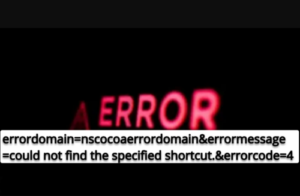How Interactive Email AMPs Up Email Engagement
Interactivity in Email – What is it?
Let’s first define interactivity. Interactivity gives the email recipient the ability to click within the email and change its contents in some way without having to click to a browser to interact with it. As you may have guessed, this automatically disqualified gifs. Gifs are not interactive content. They are animated content that is meant to draw attention, and while they may be an effective engagement strategy, they really aren’t what we are talking about when we say interactive content. To really understand what interactivity in email means, picture the ability to add an item to cart within the email, or being able to click on something to make the text expand and show more information, again, within the email. These are perfect examples of interactivity in email, but they aren’t that common! Just think, when was the last time you saw something like this in your email?
How hard is it?
Let’s talk about why we haven’t seen much interactivity in email yet. In short, it’s hard! Html email is very limited and fragile. It’s already difficult to make the email code compatible with all email clients and devices… Even the pros can’t always get this right. So how do you think throwing in an extra, complex layer of code will fair? Not well unless you spend a lot of time on it. Some brands do this, and good for them. For those of us without unlimited resources, this just isn’t feasible. So, why will interactivity in email become one of the hottest trends in email marketing, you ask? Good question. Interactivity in email has seen steady adoption throughout the year, but it’s been slow! The reason we expect it to take off soon is because of a new Google technology, AMP for Email.
AMP for Email is impressive. It takes email beyond the limits of regular html email, and it makes those difficult interactive elements a lot easier to achieve (although it’s still not easy). The challenge with AMP for Email is the high barrier to entry. Currently, you must be Google approved to send AMP emails, and due to it being a new technology it still requires coding skills by someone who knows what they are doing. However, these barriers are slowly getting easier to jump over, making it less risky for businesses to try. Email building platforms like Dyspatch, a leader in the email building software space, are making it easier for nontechnical marketing folks to build AMP emails. So, how do they make building AMP email easier? Within the Dyspatch platform, you can select (or build your own) a theme to control the look and feel of an email template. They will soon be releasing an AMP theme that contains pre-coded AMP blocks that can be dragged and dropped right into the email template. These types of tools will play a key role in mainstream adoption of AMP for email.
The Benefits
The benefits of interactivity in email are non-disputable. While AMP for email is new and has barriers that we need to overcome, this approach has been proven to drive up engagement and conversion.
When we look at ROI like 500% increase in comment replies on Google docs from having live commenting in email notifications, or 300% increases in recovered revenue from abandoned cart emails that incorporate add to cart functionality within the email, the results seem almost too good to be true. So let’s do a deep dive into how these results are possible:
- Less steps – by removing the click between the email and the browser, you’re shortening the funnel. There is a lot of data out there that by removing a step in the process to taking an action, you are highly likely to increase conversions. Simply by removing a couple of steps you can significantly increase conversions.
- Engage faster – Instead of asking the email recipient to wait for a page to load, you’re able to capture their attention much faster by presenting them the information they need up front. No clicks, no browser, no hassle. It seems like a small change, but the human attention span is only 8 seconds long!
- Reduce friction – By not requiring the click, you remove the friction that comes with the click. Slow load times, logging into an account, etc.
- Improve the experience – Your recipients will appreciate that they don’t have to endure the friction points above. They might be used to it now, because it’s all they know. But once they experience a better way, it will help to build stronger brand trust and loyalty. It’s like before drive throughs were a thing, did we actually get out of our cars, order inside and wait? To then just get back in our car and drive away when we could have just not moved a foot to accomplish the exact same thing.
- Impress your readers – Email might be struggling to engage recipients as effectively as it used to, but yes, it’s still possible to impress your readers. It just requires providing more value to the reader, and that doesn’t always mean better content. The way the content flows and is presented is also important, and interactivity in email provides a great way to not only draw your audience in, but also get them excited about your emails.
Now what?
We’ve discussed the reasons why interactivity in email hasn’t been widely adopted yet, as well as the reasons you should adopt it. So let’s switch gears and talk about how to get started. As previously mentioned, building interactive emails can be challenging, and if you want to use AMP for email technology, you should know that not all email clients support it. However, Gmail, which has 28% market share (and growing) supports AMP for email, so this shouldn’t be a main concern unless you believe most of your email recipients use something else. Here is a list of all email clients that support AMP for email. There is also this great resource that tells you everything you need to know and provides a step by step guide for what to do next.
Interactivity is the key to engagement. Turn boring, static emails into exciting, interactive emails that your audience wants to engage with. When was the last time you were excited about an email? It’s possible and a powerful advantage over your competition if you get on board first.







